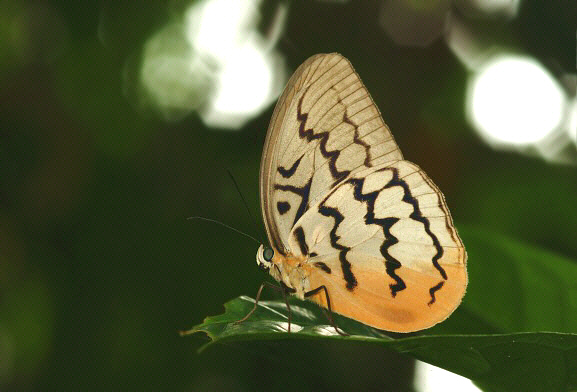
Introduction
In the Oriental and Australian regions, the subfamily Morphinae, ( which includes the brilliant blue Morphos and giant Owl butterflies of the neotropics ) is represented by the tribe Amathusiini – which also includes the genera Faunis, Taenaris, Amathusia, Thauria, Zeuxidia, Amathuxidia, Thaumantis, Discophora and Enispe.
The genus Melanocyma includes just a single instantly recognisable species – faunula. It is a fairly large insect, with a wingspan of about 9cms.
The butterfly occurs in Burma, Thailand, Bhutan and peninsular Malaysia.
Habitats
This species breeds in primary rainforest at altitudes between sea level and about 1000m.
Lifecycle
There does not appear to be any published data regarding the early stages of this species, but the following generalisations apply to the tribe Amathusiini, and are probably applicable : The eggs are laid in clusters on the foodplants, which according to species may be palms, banana, bamboo, sugar cane, ginger or other monocotyledons. The caterpillars are typically cylindrical and covered in fine dense hairs ( setae ). There are tufts of longer hair along the back, and on the thorax. The tail end bears a pair of prominent caudal forks, used to flick droppings away from the feeding site. When young the caterpillars feed gregariously, and if alarmed raise their foreparts to expose a gland from which noxious anti-predator pheromones are disseminated. The chrysalis is smooth, and shaped like a plump banana, and is suspended by the cremaster from woody stems.
Adult behaviour
The butterflies are always encountered singly, and usually seen flying around forest edge habitats or sunny glades. They have a slowish wing beat, but fly rapidly over short distances, nearly always settling on the foliage of trees at heights of between 4 – 8m above ground level. Males show territorial tendencies, and are very reluctant to leave the vicinity of favoured trees.
NB : this species is wrongly captioned as Taenaris horsfieldii in “Butterflies of the Malay Peninsula” by Corbet & Pendlebury ( 1992 ), plate 18.
